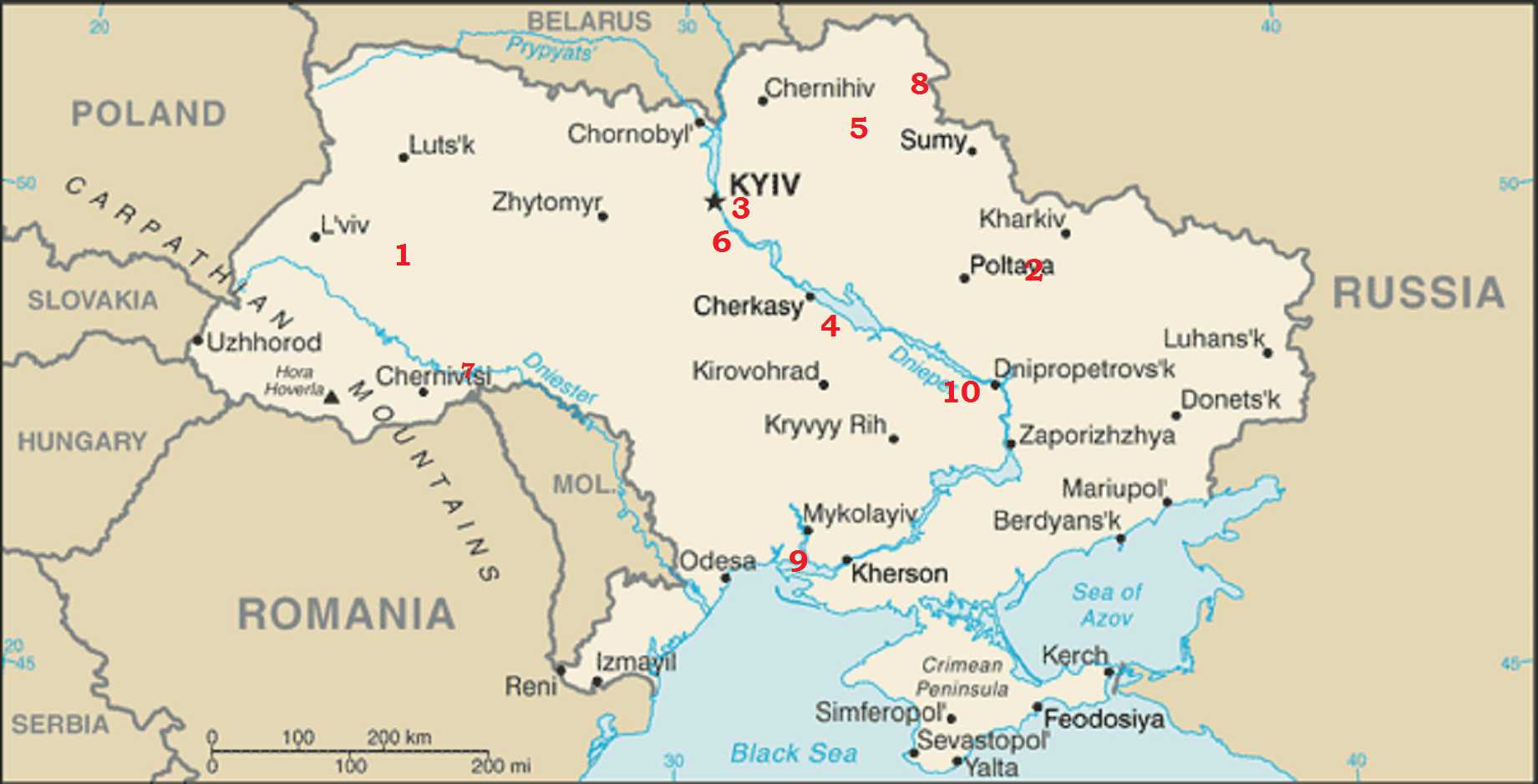
Through Time and Space in Ukraine Quiz
Welcome! In yet another quiz on Ukrainian history, you are tasked with locating the place where ten events in the tumultuous history of the country occurred. Enjoy!
A label quiz
by DeepHistory.
Estimated time: 3 mins.
- Home
- »
- Quizzes
- »
- History Trivia
- »
- European
- »
- Ukrainian
